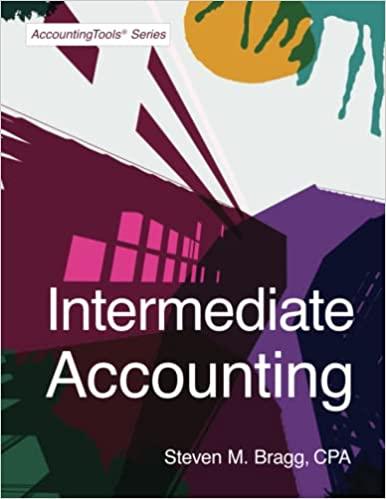Tax effects of acquisition. Trapani Tool Company is evaluating the acquistion of Sussman Casting. Sussman has a tax loss carryforward of $2,000,000. Trapani can purchase Sussman for $2,900,000. It can sell the assets for $2,200,000, their book value. Trapani expects earnings before taxes in the 5 years after the merger to be as shown in the following table: The expected eamings given are assumed to fall within the annual limit that is legally allowed for application of the tax loss carryforward resulting from the proposed merger. Trapani is in the 40% tax bracket. a. Calculate the firm's tax payments and earnings after taxes for each of the next 5 years without the merger b. Calculate the firm's tax payments and earnings after taxes for each of the next 5 years with the merger: c. What are the total benefits associated with the tax losses from the merger? (Ignore the time value of money.) d. Discuss whether you would recommend the proposed merger. Support your decision with figures. Data table Click on the icon here = in order to copy the contents of the data table below into a spreadsheet.) a. Without the merger, the firm's tax payment in year 1 is \$ (Round to the nearest dollar.) The firm's earnings after taxes in year 1 is $. (Round to the nearest dollar.) Without the merger, the firm's tax payment in year 2 is $ (Round to the nearest dollar.) The firm's earnings after taxes in year 2 is $ (Round to the nearest dollar.) Without the merger, the firm's tax payment in year 3 is $ (Round to the nearest dollar.) The firm's earnings after taxes in year 3 is $ (Round to the nearest dollar.) Without the merger, the firm's tax payment in year 4 is $. (Round to the nearest dollar.) The firm's earnings after taxes in year 4 is $ (Round to the nearest dollar.) Without the merger, the firm's tax payment in year 5 is $ (Round to the nearest dollar.) The firm's earnings after taxes in year 5 is $ (Round to the nearest dollar.) b. With the merger, the firm's tax payment in year 1 is $ (Round to the nearest dollar.) The firm's earnings after taxes in year 1 is S (Round to the nearest dollar.) With the merger, the firm's tax payment in year 2 is S (Round to the nearest dollar.) The earnings after taxes in year 2 is $ (Round to the nearest dollar.) With the merger, the firm's tax payment in year 3 is $ (Round to the nearest dollar.) The earnings after taxes in year 3 is 5 (Round to the nearest dollar) With the merger, the firm's tax payment in year 4 is S (Round to the nearest dollar.) The earnings after taxes in year 4 is $ (Round to the nearest dollar.) With the merger, the firm's tax payment in year 5 is $ (Round to the nearest dollar.) The earnings after taves in year 5 is $ (Round to the nearest dollar:) With the merger, the firm's tax payment in year 3 is $ (Round to the nearest dollar.) The earnings after taxes in year 3 is $ (Round to the nearest dollar.) With the merger, the firm's tax payment in year 4 is $ (Round to the nearest dollar.) The earnings after taxes in year 4 is $ (Round to the nearest dollar.) With the merger, the firm's tax payment in year 5 is $ (Round to the nearest dollar.) The earnings after taxes in year 5 is $ (Round to the nearest dollar.) c. The total benefits associated with the tax losses from the merger is $ (Round to the nearest dolla d. Would you recommend the proposed merger? (Select the best answer below.) Yes No










